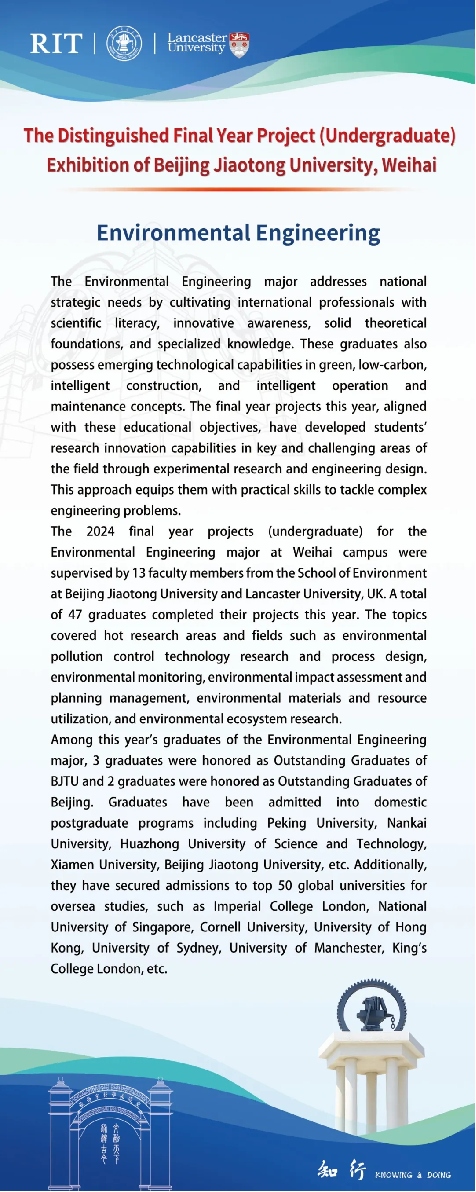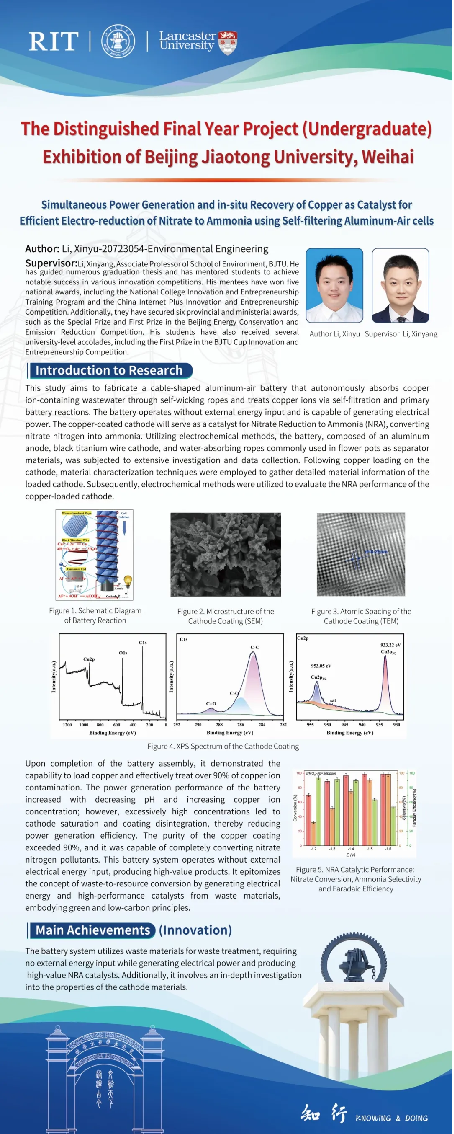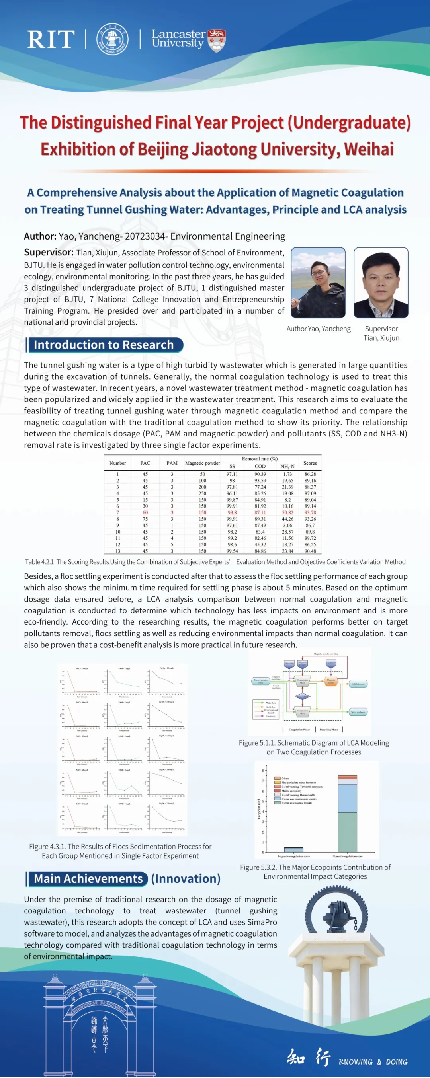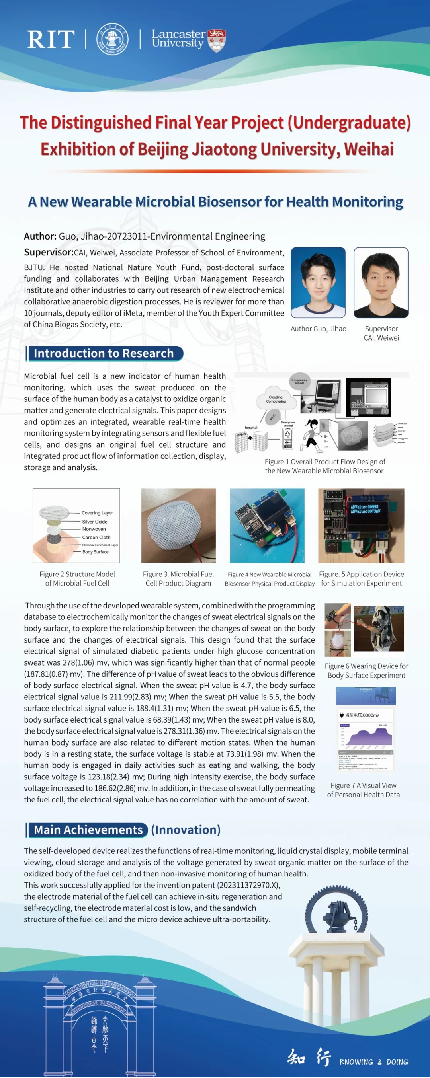
LI Xinyu
In this study, a cable-like aluminum-air battery was fabricated to draw copper ion wastewater through self-absorption and treat copper ions through self-filtration and primary cell reaction. The cell can be loaded with copper and treat more than 90% of copper ion pollution. At the same time, the copper-coated cathode will act as an NRA catalyst to convert nitrate nitrogen to ammonia. The battery system does not require external power input, generating electricity from waste and outputting a high-performance catalyst, reflecting green and low-carbon concepts.

Yao Yancheng
The aim of this study is to evaluate the feasibility of magnetic coagulation for the treatment of tunnel gushing water. Through the weight assignment method and optimal dosage test, the advantages of magnetic coagulation technology over conventional coagulation technology in the convenience of target pollutant removal are shown, and the concept of LCA is adopted and modeled using SimaPro software to analyze the advantages of magnetic coagulation technology over conventional coagulation technology at the level of environmental impact.

Guo Jihao
Based on the concept of microbial fuel cell, this paper designs an all-in-one, wearable real-time health monitoring system consisting of a collection of sensors and a flexible fuel cell. The human body surface sweat is used as a catalyst to oxidize the organic matter and generate electrical signals, which is combined with a programmed database to electrochemically monitor the changes in the electrical signals of the body surface sweat, and explore the relationship between the changes in the human body surface sweat and the changes in its electrical signals.


